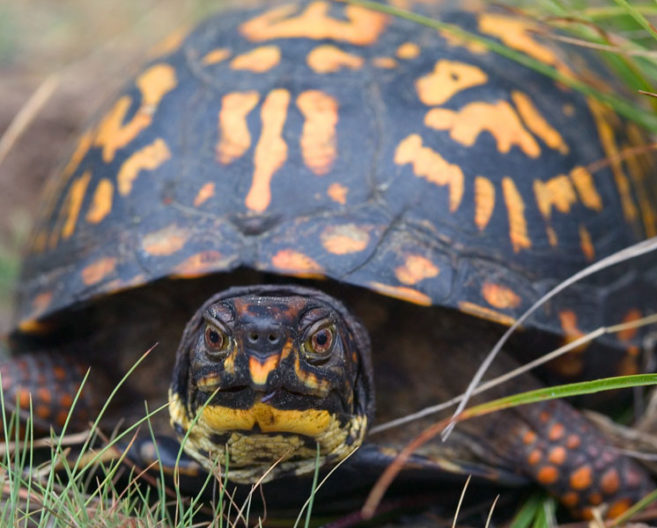
The research keeps rolling from the 150+ research projects that received cash through SciFund Challenge-sponsored crowdfunding. Our very own Sean Sterrett, a wildlife ecologist at the US Geological Survey, crowdfunded to help cover the costs of his turtle research. Well part of that research has now been published in the journal Freshwater Biology.
What’s the research about? Well, turtles of course. Specifically, the research is about how turtles use phosphorus. Phosphorus is an element that is essential for all living things, including turtles (also including you, by the way). Consequently, understanding how phosphorus is used by organisms is a critical part of understanding how ecosystems work.
Phosphorus is particularly important for turtles because of their beefy skeletons (think of those turtle shells, which are bone) and all those bones demand a lot of phosphorus. It has generally been thought that the more extensive a skeleton that an animal species has, the more phosphorus that species will demand from its environment.
In his research on freshwater turtles, Sean Sterrett finds that the situation is not quite so simple. Because turtles are mostly composed of phosphorus-loving bone, a gigantic proportion of the total phosphorus in the lakes, rivers, and other freshwater systems where turtles live is contained within those turtles. However, turtles don’t grow very quickly (but they do grow a long time, being long-lived animals). So, at any particular time, turtles don’t need a massive amount of phosphorus to keep growing their skeletons.
The consequence of all this is that skeleton size is not, by itself, a great measure of an animal species’ phosphorous demand on its environment. The bottom line? Our understanding of how phosphorus moves through ecosystems is not as complete as we thought.


